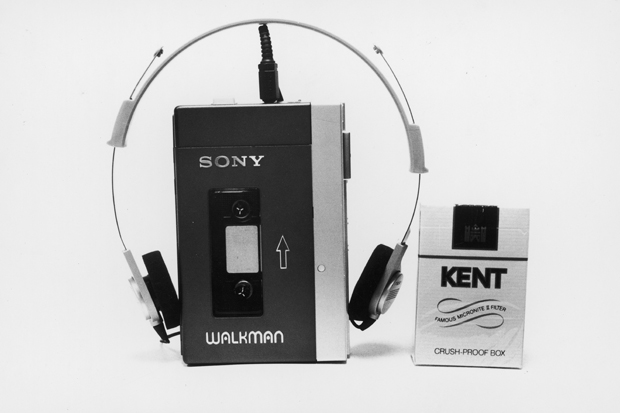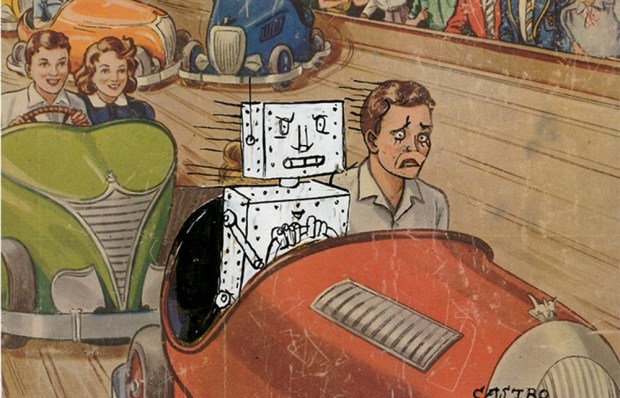McDonald’s got rid of cutlery. Uber does not allow you to pre-book taxis. Amazon began by selling only books. Conventional logic would suggest that successful innovations are best when they allow you to do lots of things. Actually, if you want your innovation to change behaviour, it is often best to launch an innovation which does only one thing. It is much easier to adopt a new technology if its function is unambiguous. The device solves one simple problem, and solves it very well. If X then Y.
I have never had much luck with multi-purpose kitchen devices. Although theoretically they have a plethora of different uses, their application is so vague that you end up not using them at all. You may have a microwave which also contains a grill function. Have you used it more than twice? I doubt it.
The temptation is always there for manufacturers to add functionality to things — since conventional logic suggests that more must be better. What takes real genius is to leave things out.
Akio Morita (1921–1999) came from a Japanese family which had been involved in the production and sale of soy and miso sauce since the mid-17th century. With his business partner Masaru Ibuka, he founded Sony (as the Tokyo Telecommunications Engineering Company) in 1946.
Large magnetic tape recorders were the company’s first area of focus, later followed by the first fully transistorised pocket radio. But perhaps his greatest moment of genius involved the creation — almost from nowhere, as it seemed — of the Sony Walkman, the ancestor of the iPod. It is hard to remember how revolutionary this seemed at the time.
To anyone born after 1975 there is nothing outlandish about people walking around or sitting on a train wearing headphones. I was born in 1965. Let me assure you, in the 1970s this was a very odd behaviour indeed; analogous to the early days of cellphones in the late 1980s, when to use one in public carried a high risk of abuse. (I can also remember seeing my first jogger in the 1970s and assuming for a moment that he was being pursued by some unseen assailant.)
In market research, the Walkman aroused very little interest and quite a lot of hostility. ‘Why would I want to walk about with music playing in my head?’ was a typical response.
Morita ignored this. The request for the Walkman had initially come from the 70-year-old Ibuka, by then honorary chairman of Sony, who wanted a small device that would allow him to listen to a full-length opera on his many flights between Tokyo and the US. Or perhaps it was his own idea — accounts differ.
When the engineers came back, they were especially proud. Not only had they succeeded in achieving what Morita had briefed them to create — a miniature stereo cassette-player — they had managed to include a recording function in the Walkman. I imagine they were crestfallen when Morita told them to remove it.
Because of the technology involved (the innards of the Walkman were in part derived from the Sony Pressman, a miniature dictation machine much used by journalists), and given the economics of mass production, the addition of a recording function would have added no more than a few dollars, if that, to the final purchase price. (The first Walkman did in any case contain a microphone — but this was to allow a companion to talk to you while you were wearing headphones.) Why would you not add this significant extra functionality to a device if it were only to add an insignificant increment to the price?
Any ‘rational’ person would have advised Morita to go with the engineers’ advice. I’m pretty sure I would have done so. According to many stories it was Morita who vetoed the addition of a recording function.
Why?
Morita’s argument was that the presence of a recording function would confuse people about what the device was for. Is it for dictation? Should I record my vinyl record collection on to cassette using the device? Should I record live music?
By removing the recording function from the earliest Walkman devices, Sony produced a device which had a smaller range of uses — but a far greater potential to change behaviour. By narrowing the perceived uses of the device, it meant that it could do only one thing: this made it much easier to adopt the new behaviour — since there was only one possible behaviour to adopt.
People who know a great deal about design, such as the wonderful Donald Norman, spend a lot of time writing about door handles. A good door not only allows you to open it; it also signals to you — without your needing to think about it — whether you are supposed to push the door open or pull it. A plate only allows you to push — so you instinctively push. A protuberant handle is clearly designed to be pulled, so you pull. Very occasionally you will come across a door with what appears to be a handle but which is designed to be pushed open: this will confuse the hell out of you, and for a brief moment make you feel like an idiot. The best thing you can do with such a door is to ‘reduce the affordance’ by taking the handle off. This will make it instinctively much easier to use.
The world is full of invisible intelligence of this kind. One defence I always make of traditional architecture is that it is very user-friendly, and can be used without any conscious thought. Modern architecture, as anyone who attended a concert at the Barbican in the days before they sensibly invested in better signage will remember, has an amazing power to create bemusement in those unfamiliar with the building.
A few years ago I was one of ten people from the advertising industry who were supposed to be speaking at a conference in the Purcell Rooms, a brutalist 1960s building on the south bank of the river Thames. All of us were wandering around the building trying various glass doors and unable to work out where we were supposed to go in. ‘Say what you like about classical architecture,’ I commented, ‘but nobody in 250 years has ever approached the frontage of the British Museum and thought, “Hmm, I wonder where the door is?” ’
Got something to add? Join the discussion and comment below.
Get 10 issues for just $10
Subscribe to The Spectator Australia today for the next 10 magazine issues, plus full online access, for just $10.
You might disagree with half of it, but you’ll enjoy reading all of it. Try your first month for free, then just $2 a week for the remainder of your first year.















Comments
Don't miss out
Join the conversation with other Spectator Australia readers. Subscribe to leave a comment.
SUBSCRIBEAlready a subscriber? Log in